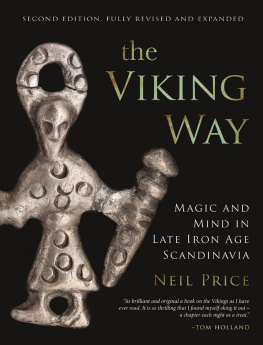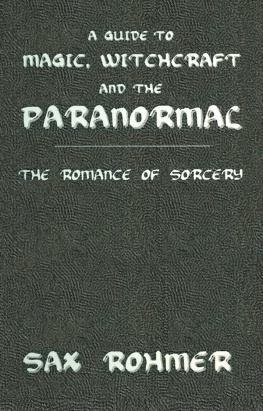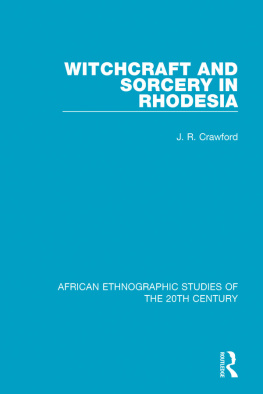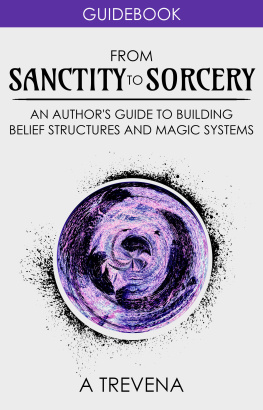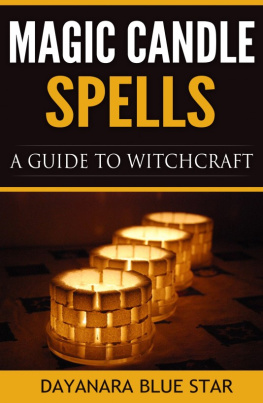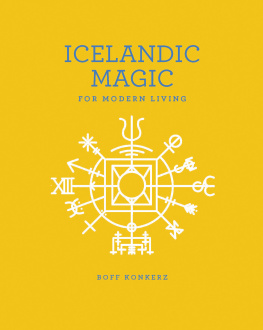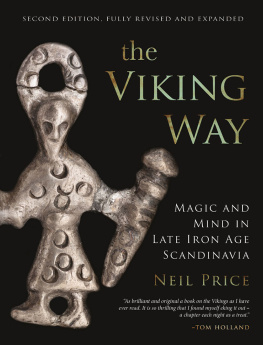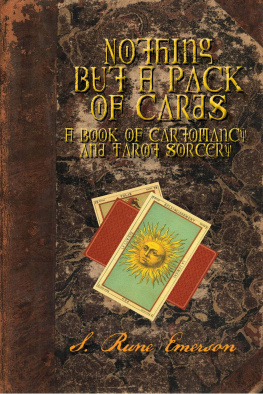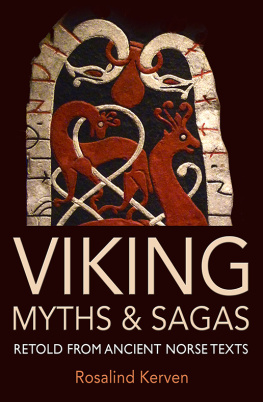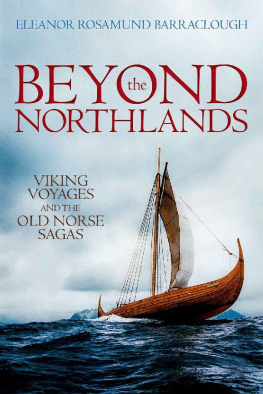Pagebreaks of the print version

The Viking Way
Praise for the first edition of The Viking Way
One of the most important contributions to Viking studies in recent years, quite possibly in recent decades an exceptional book essential reading
Dr. Matthew Townend, Antiquity
This will be the starting point for any discussion of early northern religion from now on this book is about to become famous it is the sense of being invited back-stage in history to discover not magic realism, but the reality behind the magic
Professor Martin Carver, Fornvnnen
Takes the reader on an exciting journey anyone reading Prices book will never again be able to romanticise the Vikings and their time here the terror and madness of the Viking Age Odin cult and its war-fixation emerge unvarnished a book that is going to be debated for a long time to come
Professor Gro Steinsland, Collegium Medievale
A big, packed, inspirational book one of those that moves archaeology forwards, gives it nourishment and opens new avenues
Professor Else Roesdahl, Kuml
This refreshing, thoroughly researched and inspirational book sheds exciting new light on the Viking Age. I am already recommending it to all my students
Dr. Terry Gunnell, University of Iceland
A fresh and stimulating analysis which unites archaeology and ethnography and makes excellent use of both
Professor Richard Bradley, University of Reading
A ground-breaking work of research in archaeology and the humanities, with an impact that will be felt for many years it has turned our view of this period upside down
Professor Helle Vandkilde, University of Aarhus
In Sweden the book has received prizes from the Royal Academy of Letters, History and Antiquities, the Royal Gustav Adolf Academy, and Uppsala University. In 2017 Professor Price was awarded the prestigious Thurus prize from Swedens oldest learned academy, the Royal Society of Sciences, for his lifetime contribution to Viking studies.
THE VIKING WAY
MAGIC AND MIND IN LATE IRON A GE SCANDINAVIA
NEIL PRICE
Oxford & Philadelphia
Published in the United Kingdom in 2019 by
OXBOW BOOKS
The Old Music Hall, 106-108 Cowley Road, Oxford OX4 1JE
and in the United States by
OXBOW BOOKS
1950 Lawrence Road, Havertown, PA 19083
Oxbow Books and the author 2019
Hardcover Edition: ISBN 978-1-84217-260-5
Digital Edition: ISBN 978-1-78570-802-2 (epub)
Kindle Edition: ISBN 978-1-78570-803-9 (Mobi)
A CIP record for this book is available from the British Library
Library of Congress Control Number: 2019931263
All rights reserved. No part of this book may be reproduced or transmitted in any form or by any means, electronic or mechanical including photocopying, recording or by any information storage and retrieval system, without permission from the publisher in writing.
For a complete list of Oxbow titles, please contact:
UNITED KINGDOM
Oxbow Books
Telephone (01865) 241249
Email:
www.oxbowbooks.com
UNITED STATES OF AMERICA
Oxbow Books
Telephone (800) 791-9354, Fax (610) 853-9146
Email:
www.casemateacademic.com/oxbow
Oxbow Books is part of the Casemate Group
Front cover: The silver weapon dancer pendant from a female inhumation, Birka grave Bj. 571 (photo Gabriel Hildebrand, Swedish History Museum, used by kind permission).
To my children
Lucy and Miranda
List of figures and tables
Figures
Figure 1.1 Birka meditations: the Hemlanden cemetery in winter, from a pencil drawing by Gunnar Hallstrm, c .1900.
Figure 1.2 The runestone from Rk (g 136), stergtland, Sweden.
Figure 2.1 An animal with tree-antlers depicted on a Viking-Age wall-hanging (weave II) from verhogdal in Hrjedalen. This may be one of the four stags that graze in the branches of Yggdrasill, the World Tree.
Figure 2.2 A scene from weave Ia from verhogdal, possibly depicting events from the Ragnark. At the bottom may be the World Tree Yggdrasill, with above it the wolf Fenrir opening his jaws. In front of Fenrir may be Naglfar, the Nail Ship bringing the dead to the last battle.
Figure 3.1 A possible Rider figure on stone 3 from Hunnestad in Skne, which in the Viking Age was part of Denmark (DR 284).
Figure 3.2 Worms woodcut of the Hunnestad monument as it was in the 1600s. Five of the eight stones are now lost.
Figure 3.3 Plan of Viking-Age Birka, showing the urban settlement, the surrounding cemeteries, and the location of the four possible sorceress graves.
Figure 3.4 Plan of Birka chamber-grave Bj. 660 (field drawing by Hjalmar Stolpe).
Figure 3.5 Plan of Birka chamber-grave Bj. 660 (drawing by Harald Olsson).
Figure 3.6 Reconstruction of Birka chamber-grave Bj. 660 as it may have appeared when the burial was sealed.
Figure 3.7 Plan of the double inhumation in Birka chamber-grave Bj. 834 (field drawing by Hjalmar Stolpe).
Figure 3.8 Plan of the double inhumation in Birka chamber-grave Bj. 834 (drawing by Harald Olsson).
Figure 3.9 Plan of Birka chamber-grave Bj. 644, used to determine the original disposition of grave Bj. 834. Both burials seem to have contained a man seated in a chair, with a woman seated on top of him in his lap.
Figure 3.10 Reconstruction of the double inhumation in Birka chamber-grave Bj. 834 as it may have appeared when the burial was sealed, seen from above.
Figure 3.11 Reconstruction of the double inhumation in Birka chamber-grave Bj. 834 as it may have appeared when the burial was sealed, seen from the side.
Figure 3.12 Grave-goods from the double inhumation in Birka chamber-grave Bj. 834.
Figure 3.13 Plan of Birka chamber-grave Bj. 845 (field drawing by Hjalmar Stolpe).
Figure 3.14 Plan of Birka chamber-grave Bj. 845 (drawing by Harald Olsson)
Figure 3.15 Reconstruction of Birka chamber-grave Bj. 845 as it may have appeared when the burial was sealed.
Figure 3.16 Location plan for graves 59:2 and 59:3 at Klinta, Kpings parish, land.
Figure 3.17 Plan and section drawings of the womans grave, 59:3, at Klinta, Kpings parish, land.
Figure 3.18 The urn containing the washed bones of the woman in mound 59:3 at Klinta, Kpings parish, land.
Figure 3.19 Section drawing through the cremation pit under the remains of the pyre, grave 59:3 at Klinta, Kpings parish, land.
Figure 3.20 The two curled copper sheets with runic inscriptions from grave 59:3 at Klinta, Kpings parish, land.
Figure 3.21 Photograph showing the cremation pit before excavation, under the remains of the pyre in grave 59:3 at Klinta, Kpings parish, land.
Figure 3.22 Plan and section drawings of the mans grave, 59:2, at Klinta, Kpings parish, land.
Figure 3.23 The silver pendant in the shape of a mans head, from the female cremation at Aska in Hagebyhga in stergtland.
Figure 3.24 The pendant with a female figurine from Aska in Hagebyhga, stergtland.
Figure 3.25 A schematic drawing of the pendant with a female figurine from Aska in Hagebyhga, stergtland.
Figure 3.26 The Fyrkat circular enclosure in its landscape, with the cemetery on the peninsula to the north-east.
Figure 3.27 Plan of the Fyrkat cemetery, showing the postholes of the raised walkway and the outlines of the burials.
Figure 3.28 Plan of grave 4 at Fyrkat.
Figure 3.29 A reconstruction of grave 4 at Fyrkat as it may have appeared when the burial was sealed.

